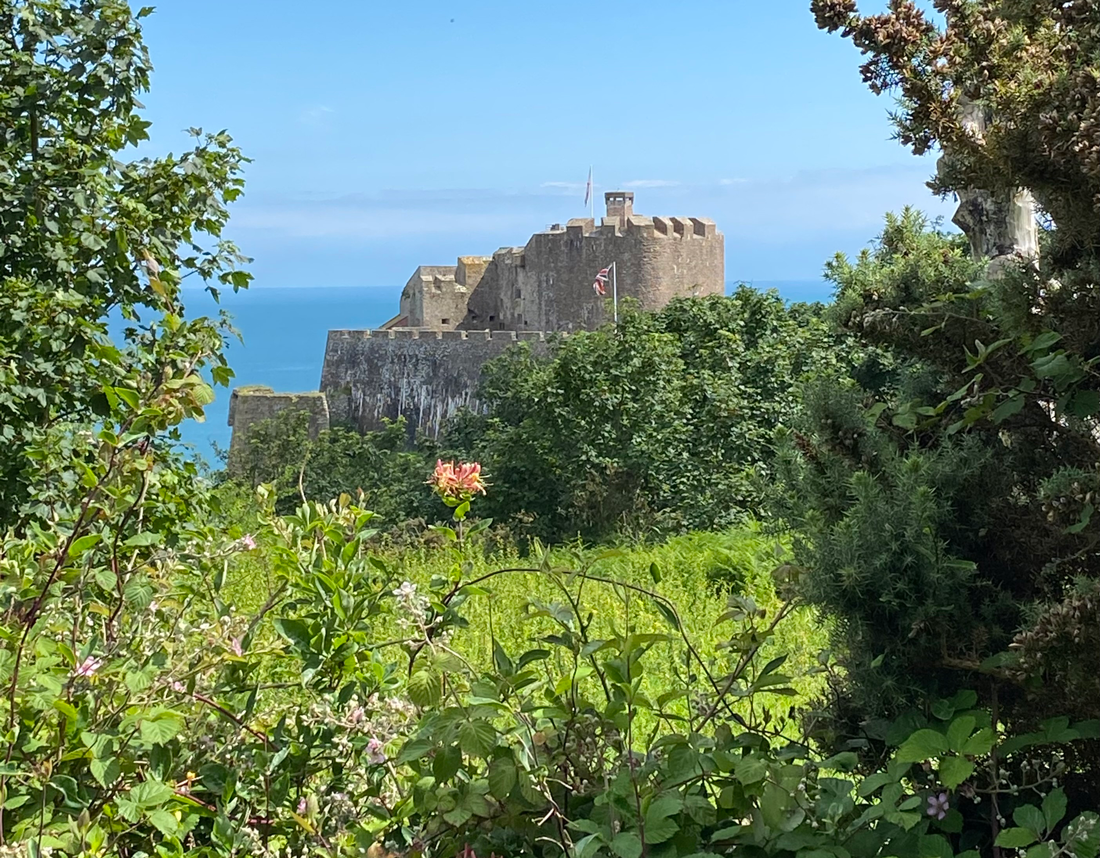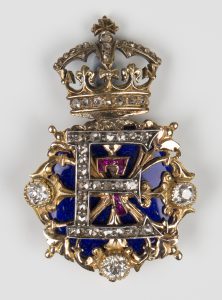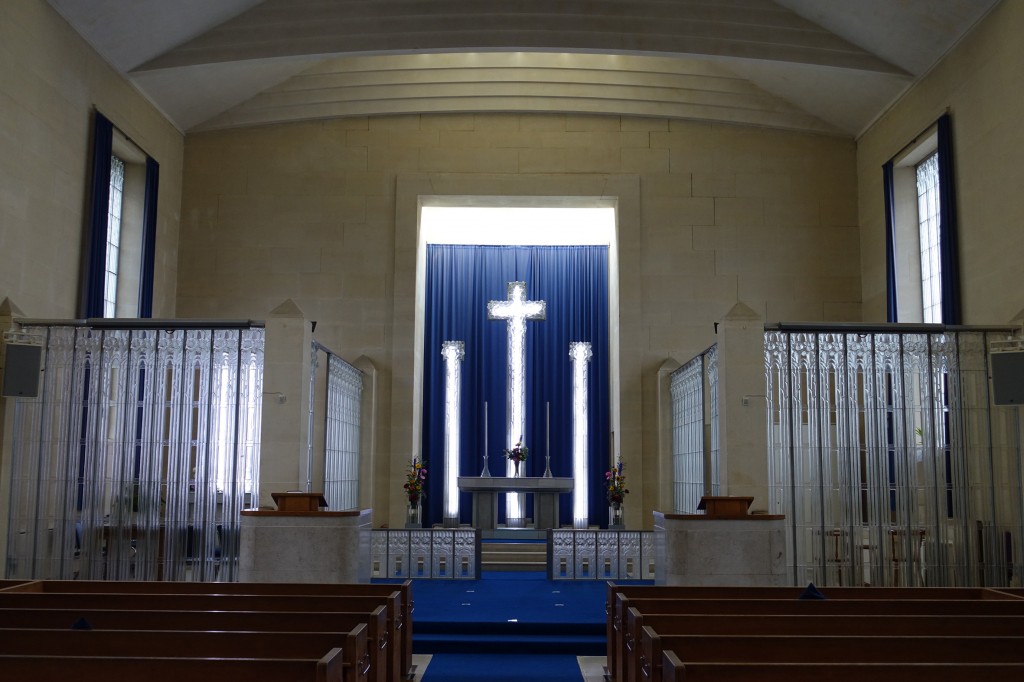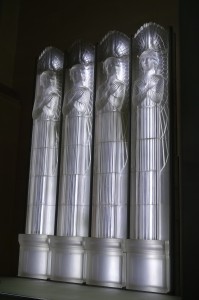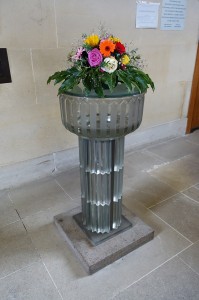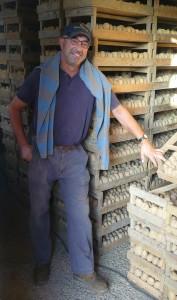
This week I am revisiting one of my favourite archaeological sites on the Island of Jersey, La Hougue Bie. The site traces human activity and spirituality over millennia and the passage grave dates from around 4500 BC. Today it is in the Parish of St Saviour up in the country.
The name La Hougue Bie is thought to refer to ‘a building on an earth mound’. My father in law, Frank Falle, a respected Jersey historian, has spent a considerable time piecing together the importance of the Vikings in Jersey’s history and it is likely that Hougue derives from the Viking word for burial mounds, ‘haugrs’.
I think we suffer from a lack of humility in our current age when we reflect on the culture and achievements of our ancient forebears. It must have been an enormous undertaking for this community to bring the large upright stone and capstones from different areas in the east of the island. There are 69 large stones, some weighing 30 tons.
The passage measures some 31feet in length and although it is known as a grave passage it would have been used for rituals and ceremonies as well as burials, rather like a church today.
The site was first excavated in 1924 and the massive stone structure was revealed by archaeologists in the early 1990s. Their work revealed that the interior passage and chambers we see today were part of the first phase of building and were covered by a beautifully constructed cairn. Evidence of this can be seen at the entrance to the tomb. The dry stonework and earthworks followed.
Remarkably on the 20th March 1996 the rising sun cast its rays along the length of the passage grave, perhaps for the first time in some 4500 years, revealing that it was aligned to capture the rising sun of the equinox.
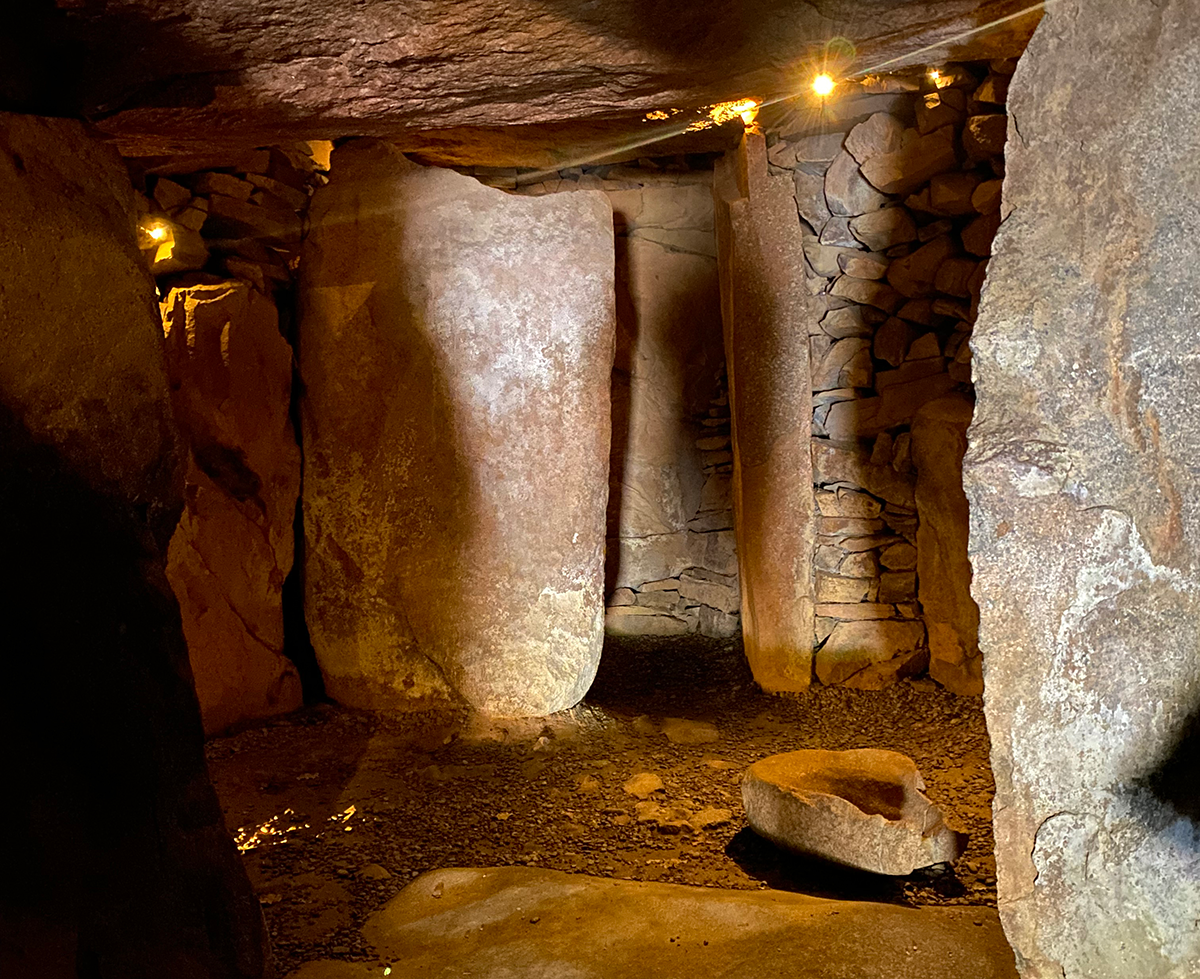
The chapel was built in the 12th century and would have probably replaced an earlier wooden structure. There are fragments of frescoes depicting angels on the ceiling of the vaults but more of them anon.
Today La Hougue Bie is an extraordinary museum with what is described as the World’s largest coin hoard on display and with human structures dating from 4500BC to the Second World War. No trip to Jersey in the Channel |Islands should be complete without a visit to this wonderful place which captures the procession of human history so eloquently.
